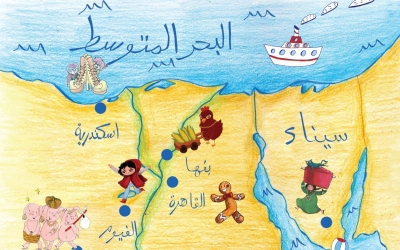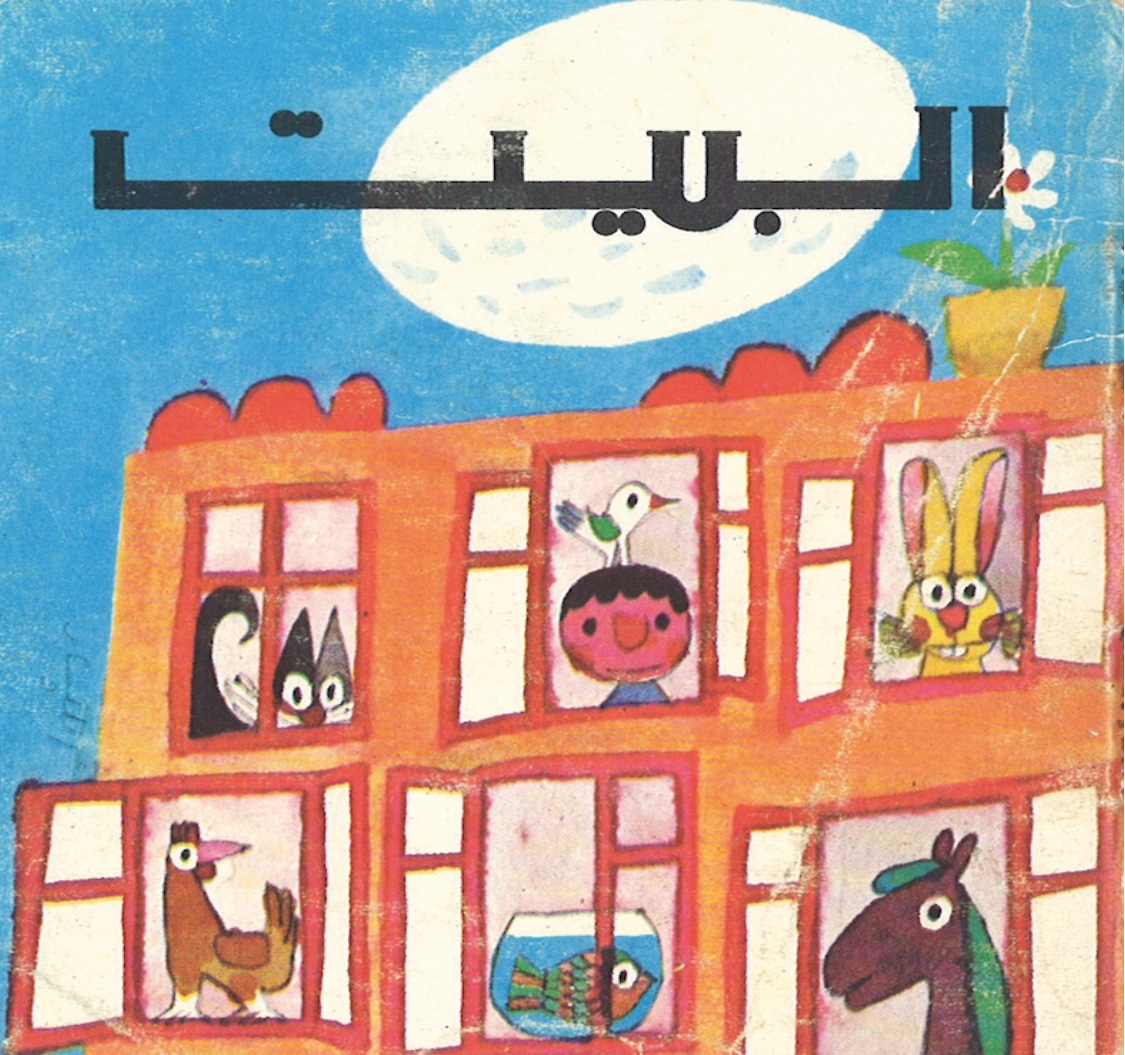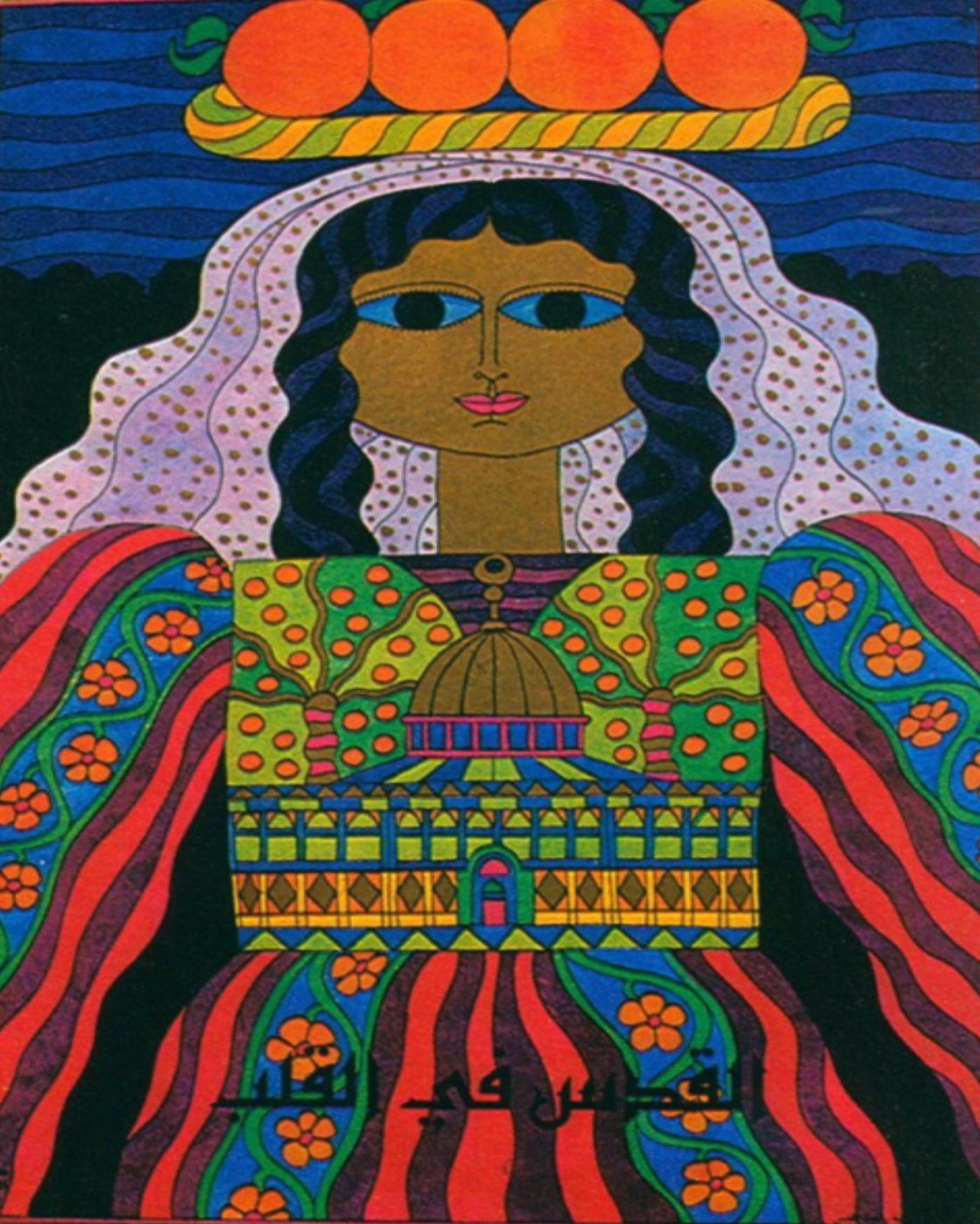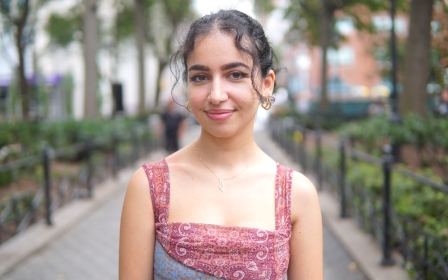Dar al-Fata al-Arabi: A look at the first Arab publishing house dedicated to children
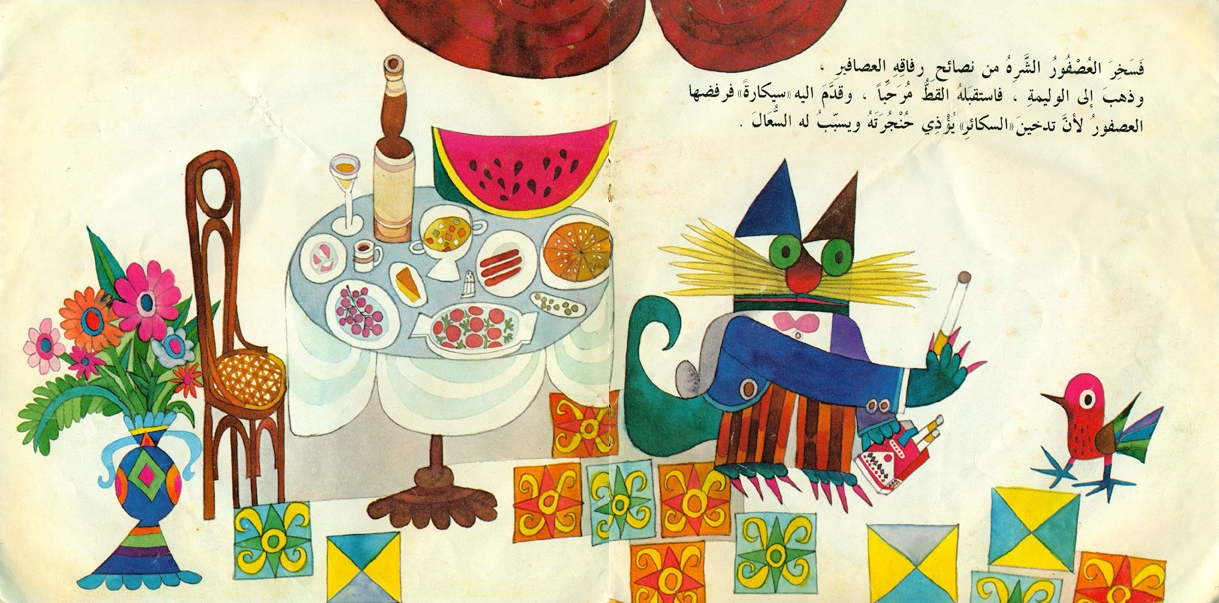
The Naksa, or the Arab defeat against Israel in 1967, led to the exodus of more than 300,000 Palestinians and a new self reckoning on the cultural future of the Arab world.
Meaning "the setback" in English, the catastrophic defeat of the Jordanian, Syrian, and Egyptian armies sent the region's intellectuals back to the cultural drawing board.
For the sculptors Mona Saudi from Jordan and Kamel Boullata from Palestine, the answer lay in future generations.
In 1974, with a group of intellectuals based in a Beirut apartment, they took the wild gamble of creating an independent publishing house “for Arab children, by Arab authors who contribute to writing the history of tomorrow”.
They started with a dual objective of transmitting Arab heritage and identity to new generations and broadening the cultural horizons of Arab youths.
New MEE newsletter: Jerusalem Dispatch
Sign up to get the latest insights and analysis on Israel-Palestine, alongside Turkey Unpacked and other MEE newsletters
The team built up around a host of artists, writers and multinational experts, particularly Palestinians.
Protagonists included Nabil Shaath, who would later become the prime minister of palestine after the Oslo Accords, as the head of the Palestinian Education Planning Department; the Palestinian writer Abu Fadi, as director; the Egyptian editor Ima'il Abdel Hakim Bakr, in charge of the general management; the Palestinian poet Zayn al-Abidine al-Huseini, as sub editor; and the Palestinian academic Nabila Salbak Barir, as editor-in-chief.
After eight months of tireless work, the dream came true. Dar al-Fata al-Arabi came into existence at the 18th Arab Book Fair in Beirut with an initial list of 66 books.
The gamble had paid off and success was dazzling.
A year later, Dar al-Fata took part in a number of book fairs in the Middle East, North Africa and Europe, including international fairs in Cairo, Beirut, Damascus and Tunis; the Bratislava Biennale of Illustration and the Bologna Children's Book Fair.
Literally "the house of the Arab child", Dar al-Fata became one of the most influential Arab institutions in the field of education and children's literature, both for its avant-gardism and the outstanding quantity and variety of its publications.
Dar al-Fata al-Arabi eventually became the foremost institution for children's literature in the Arab world, exhibiting its books at the most prestigious literary gatherings.
It won multiple awards, including the Leipzig Book Fair Prize in 1982 for Ouda al-Ta'ir ("The Return of the Bird") by Mo'een Bissesso, illustrated by Higazi.
The name of the publishing house comes from a verse by the 10th century Iraqi poet al-Mutannabi mentioning "the young Arab whose face, hand and tongue have become foreign".
Editors at Dar al-Fata believed in the cognitive and emotional capacity of the child. Through the fictional and real heroes who appeared in their books, they hoped to instil in their readers, a sense of duty and morality, making them responsible and conscious citizens.
Dar al-Fata also offered its reader a physical object of great artistic quality and humanist values.
Ellabbad and Tamer, the winning duo
Egyptian illustrator Mohieddine Ellabbad was one of the most important figures involved in Dar al-Fata al-Arabi's success and he helped to imbue it with a contemporary vision of Arab culture and art.
After finishing his studies at the Cairo School of Fine Arts, Ellabbad began illustrating books Dar al-Fata produced and was in charge of its artistic direction.
Throughout his career, his books and albums drew their inspiration from Arab cultural heritage, marrying tradition with modernity.
Syrian author Zakariya Tamer began his writing career as a freelance journalist before before producing satirical columns in pan-Arab newspapers, such as Al-Quds al-Arabi, which was based in London, and the Syria-based Al-Thawra.
It was through his work with Dar al-Fata, however, that he made his name.
Tamer left an undeniable mark on 20th-century Arab children's and youth literature.
His stories were largely inspired by Arab folk tales and his characters denounced political and social oppression, in keeping with the growing authoritarian lurch in the Arab world after the 1967 defeat.
Tamer's pen and Ellabbad's brush joined forces to give the publishing house successes that are unequalled to this day in the field of children's and youth literature in Arabic.
Their secret was to tell simple, lively and moralising stories. Their philosophy was to let children identify with their favourite heroes.
The pair created, amongst other, Al-Bayt ("Home"), a story that teaches children the importance of home and love for one's country.
The rabbit, one of the protagonists of the book, says that "every person has the right to have a home. Because it is the place that provides us with security and happiness".
Palestine as common Arab heritage
The plight of Palestinians was intimately connected to many of the publishing house's early worls.
Dar al-Fata believed its mission was to contribute to the development of Palestinian cultural creativity as an undeniable source of Arab identity.
The publishers planning department liaised with Palestine Liberation Organisation (PLO) to design teaching materials that would unify educational syllabi within the diaspora.
'What we produce embodies Arab unity'
- Mahjoub Omar, Egyptian doctor and translator
Such meetings led to the inclusion in the PLO's charter of a section entitled “the educational philosophy of the Arab-Palestinian people”.
Within this context, Dar al-Fata published its first album detailing almost all Palestinian postage stamps issued since the Ottoman era.
For its linguistic identity, the publishing house opted to publish in Modern Standard Arabic, thereby making sure that all children in the Middle East and North Africa had access to their materials.
Dar al-Fata also emphasised collaboration between North African and Middle Eastern authors and illustrators in order to embody the spirit of a common heritage.
"We consider the project a space for intellectual encounter. We pay close attention to each book we publish, we try to bring together an author and an illustrator from different Arab countries. In other words, what we produce embodies Arab unity," Egyptian doctor and translator Mahjoub Omar explained.
In addition to consolidating the idea of common identity and heritage in the minds of Arab children, the publishing house took on a second mission: promoting openness to others, interreligious dialogue and plurality.
The team also hired expert translators to adapt into Arabic and other languages masterpieces of world literature.
For example, it published The Fables of the French poet Jean de La Fontaine, The Tales of Mother Goose by Charles Perrault, The Children's and Household Tales by the German brothers Jacob and Wilhelm Grimm, and The Fables of the legendary Greek storyteller Aesop, amongst others.
Dar al-Fata also translated its own books, such as the short story Al-Hamama al-Bayda ("The White Pigeon") by Tamer, into English. That particular work involved the eminent Canadian translator Denys Johnson-Davis.
Premature closure
Dar al-Fata's successes and international acclaim was not enough to save it from the geopolitical reality of its home region.
With the forced displacement of the PLO from Beirut to Tunis after the Israeli invasion of Lebanon in 1982, the publishing house left the Lebanese capital for Cairo, where it closed its doors definitively in 1994, a void that continues to be felt in the Arab book industry.
The Israeli invasion, the uprooting effect of having to flee and settle elsewhere, political instability in the Middle East, as well as a shortage of paper were all factors that left those in charge of Dar al-Fata al-Arabi with no choice but to close the publishing house's doors.
However, from its ashes, came new initiatives by its alumni.
Upon returning to Cairo in 1982, Ellabbad founded, together with illustrator friends from Palestine, Syria, Lebanon, Tunisia and Yemen, an artistic centre aimed at reinventing Arabic graphic design.
This space, named al-Markaz al-Jirafiki al-Arabi ("Arab graphic center"), contributed to the creation of more than 60 children's books.
A pioneer in the production of educational material and youth literature in Arabic, Dar al-Fata al Arabi remains a name nostalgically etched in memories.
Its legacy continues to be associated with freedom of thought, creativity and the enrichment of literature in the region.
By the time it eventually closed its doors, an adventure that began in a Beirut living room had significantly influenced a generation of readers and future publishers.
This article was translated and adapted from MEE's French edition (original).
Middle East Eye delivers independent and unrivalled coverage and analysis of the Middle East, North Africa and beyond. To learn more about republishing this content and the associated fees, please fill out this form. More about MEE can be found here.


